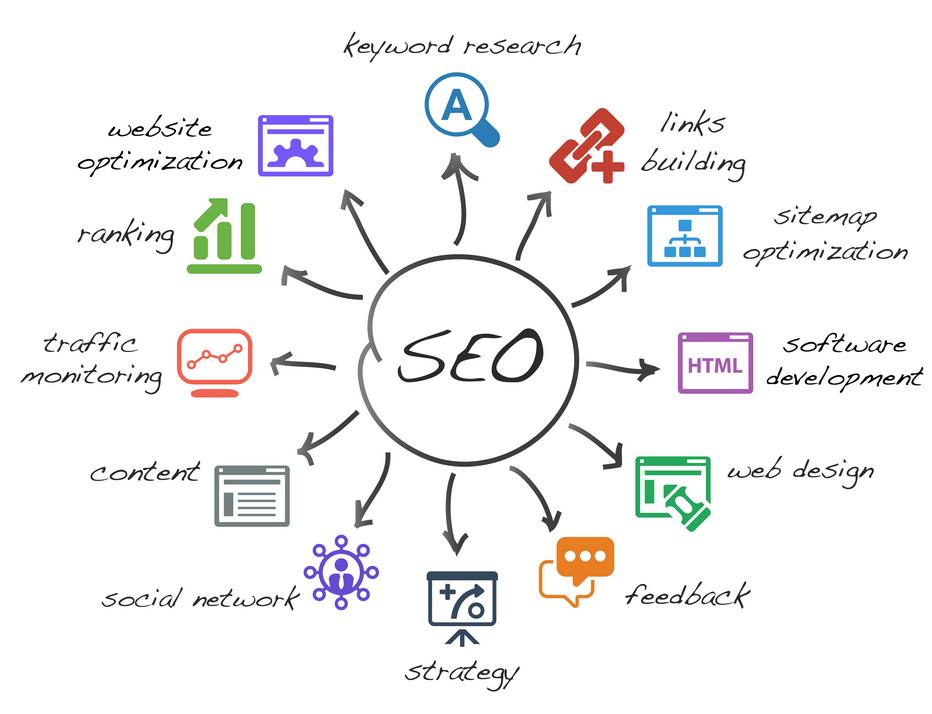转载请注明出处: SEO优化盾
本文的链接地址: https://www.passwaf.com/heimaoseo/How-to-Buy-ETFs-A-Step-by-Step-Guide-for-Beginners
Investing in Exchange-Traded Funds (ETFs) offers a dynamic and versatile approach to building a diversified portfolio. With the ability to access various asset classes, economic sectors, and geographic regions, ETFs empower investors to tailor their strategies to specific goals. From exploring growth opportunities in Emerging Markets to focusing on sector-specific themes like Technology and Clean Energy, ETFs provide a comprehensive platform for achieving both growth and stability. As you delve into the world of ETFs, understanding key characteristics and practical steps will ensure a strategic and informed investment journey, seamlessly connecting to the insights shared in the conclusion.
Understanding ETFs
Exchange-Traded Funds (ETFs) are a cornerstone of modern investing, offering flexibility and diversity across various asset classes and economic sectors.
What are ETFs?
ETFs are investment funds traded on stock exchanges, much like stocks. They hold assets such as stocks, commodities, or bonds and generally operate with an arbitrage mechanism designed to keep trading close to its net asset value. ETFs provide exposure to various sectors, including Technology, Healthcare, and Energy, and can be tailored to specific themes like Clean Energy or FinTech.
Types of ETFs
ETFs come in various forms, catering to different investment needs:
Benefits of Investing in ETFs
Investing in ETFs offers several advantages:
Risks Associated with ETFs
While ETFs are beneficial, they come with risks:
ETF vs. Mutual Funds
ETFs and mutual funds are both popular investment vehicles, but they differ in several ways:
| Feature | ETFs | Mutual Funds |
|---|---|---|
| Trading | Traded on exchanges throughout the day | Traded at the end of the day |
| Expense Ratios | Generally lower | Typically higher |
| Minimum Investment | No minimum | Often requires a minimum investment |
| Transparency | Holdings disclosed daily | Holdings disclosed quarterly |

ETF Investment Strategies
Investing in ETFs offers a variety of strategies, each catering to different financial goals and risk appetites, from Growth Investing to ESG Investing.
Growth vs. Value Investing in ETFs
Growth and Value Investing represent two fundamental approaches to investing in ETFs. Growth Investing focuses on companies expected to grow at an above-average rate compared to their industry or the overall market. This strategy often targets sectors like Technology and Biotechnology, where innovation drives expansion. On the other hand, Value Investing seeks undervalued companies that may offer a higher return potential. This approach often involves sectors like Financials and Industrials, where market mispricing can present opportunities.
Dividend and Income Investing with ETFs
Dividend and Income Investing focuses on generating regular income through dividends. This strategy is popular among investors seeking stable cash flow, often utilizing ETFs in Utilities and Real Estate sectors. Key benefits include:
ESG and Ethical Investing through ETFs
ESG (Environmental, Social, and Governance) Investing has gained traction as investors prioritize ethical considerations. ESG-focused ETFs invest in companies that adhere to sustainable practices, addressing issues like Clean Energy and Corporate Governance. This strategy not only aims for financial returns but also contributes positively to society. The table below highlights some popular ESG ETFs:
| ETF Name | Focus Area | Region |
|---|---|---|
| iShares MSCI KLD 400 Social ETF | Social Responsibility | North America |
| SPDR S&P 500 ESG ETF | Broad ESG | Developed Markets |
| Vanguard ESG U.S. Stock ETF | Environmental and Social | United States |
Smart Beta and Factor Investing
Smart Beta and Factor Investing strategies aim to enhance returns by targeting specific factors like Volatility, Momentum, and Value. Unlike traditional market cap-weighted ETFs, Smart Beta ETFs use alternative weighting methods to capture these factors. This approach is particularly popular in Quantitative Investing, where data-driven insights guide investment decisions. By incorporating these strategies, investors can potentially achieve superior risk-adjusted returns.
Geographic and Sectoral Focus
Investing in ETFs with a geographic or sectoral focus allows investors to target specific regions or industries, such as Emerging Markets or Technology.
Investing in Emerging Markets through ETFs
Emerging Markets ETFs provide exposure to rapidly growing economies like China, India, and Latin America. These regions offer unique opportunities due to their expanding middle class and increasing consumer demand. However, they also come with risks such as political instability and currency fluctuations. By investing in these markets, investors can potentially benefit from higher growth rates compared to Developed Markets. Understanding the dynamics of these regions is crucial for making informed investment decisions.
Sector-Specific ETFs: Technology and Healthcare
Sector-specific ETFs allow investors to focus on particular industries, such as Technology and Healthcare. These sectors are often at the forefront of innovation and can offer substantial growth potential. Key features include:
Regional ETFs: Europe and Asia Pacific
Regional ETFs provide exposure to specific geographic areas, such as Europe and the Asia Pacific. These regions offer diverse investment opportunities, from the stable economies of Developed Markets to the dynamic growth of Emerging Markets. The table below highlights some popular regional ETFs:
| ETF Name | Region Focus | Key Sectors |
|---|---|---|
| iShares MSCI Europe ETF | Europe | Financials, Industrials |
| Vanguard FTSE Pacific ETF | Asia Pacific | Technology, Consumer Discretionary |
| SPDR S&P Emerging Asia Pacific ETF | Emerging Asia | Consumer Staples, Energy |
ETF Characteristics and Selection
Choosing the right ETFs involves understanding their characteristics, such as leverage, volatility, and management style, to align with your investment strategy.
Leveraged and Inverse ETFs
Leveraged and Inverse ETFs offer unique opportunities for investors seeking to amplify returns or hedge against market downturns. Leveraged ETFs aim to deliver multiples of the performance of the index they track, while Inverse ETFs seek to provide the opposite performance. These ETFs are popular in sectors like Technology and Energy, where volatility can be significant. However, they come with higher risk and are generally suited for short-term trading rather than long-term investment.
Volatility and Low Volatility ETFs
Volatility and Low Volatility ETFs cater to different risk appetites. Volatility ETFs target sectors with high price fluctuations, such as Biotechnology and Cryptocurrencies. In contrast, Low Volatility ETFs focus on stable sectors like Utilities and Consumer Staples. Key considerations include:
High Dividend and Growth ETFs
High Dividend and Growth ETFs serve different investment goals. High Dividend ETFs provide regular income through dividends, often focusing on sectors like Real Estate and Financials. Growth ETFs, on the other hand, aim for capital appreciation by investing in high-growth sectors such as Cloud Computing and Artificial Intelligence. The table below compares these two ETF types:
| Characteristic | High Dividend ETFs | Growth ETFs |
|---|---|---|
| Primary Goal | Income Generation | Capital Appreciation |
| Sector Focus | Utilities, Real Estate | Technology, Biotechnology |
| Risk Level | Moderate | Higher |
| Investment Horizon | Long-term | Medium to Long-term |
Market Cap Weighted vs. Equal Weight ETFs
Market Cap Weighted and Equal Weight ETFs offer distinct approaches to portfolio construction. Market Cap Weighted ETFs allocate more to larger companies, often seen in indices like the S&P 500. Equal Weight ETFs, however, distribute investments evenly across all index components, providing greater exposure to smaller companies. This approach can lead to higher returns in Emerging Markets and sectors like Industrials and Materials, where smaller firms may outperform.
Actively Managed vs. Passive ETFs
Actively Managed ETFs involve professional fund managers making investment decisions to outperform the market, often focusing on niche areas like Space Exploration and FinTech. Passive ETFs, in contrast, aim to replicate the performance of a specific index, offering lower fees and broad market exposure. Investors must weigh the potential for higher returns against the cost of active management, considering factors such as market conditions and personal investment goals.
Currency Exposure in ETFs
Currency Exposure in ETFs can significantly impact returns, especially in international investments. ETFs with exposure to currencies like USD, EUR, and JPY may benefit or suffer from exchange rate fluctuations. Investors should consider hedging strategies to mitigate currency risk, particularly when investing in regions like Asia Pacific and Europe, where currency volatility can be pronounced.
Practical Steps to Buying ETFs
Purchasing ETFs involves several key steps, from setting investment goals to monitoring your portfolio, ensuring a strategic approach to investing.
Setting Investment Goals
Establishing clear investment goals is fundamental to successful ETF investing. Consider factors such as your risk tolerance, investment horizon, and financial objectives. Are you aiming for growth, income, or a combination of both? Defining these goals will help guide your ETF selection process, whether you’re interested in sectors like Technology or themes like Clean Energy. By aligning your goals with your investment strategy, you can create a portfolio that meets your specific needs.
Choosing the Right Brokerage
Selecting a brokerage is a crucial decision that impacts your ETF trading experience. Consider the following factors:
Executing ETF Trades
Executing trades involves a straightforward process:
Monitoring and Rebalancing Your ETF Portfolio
Regularly monitoring and rebalancing your ETF portfolio is essential for maintaining alignment with your investment goals. Over time, market fluctuations can cause your portfolio's asset allocation to drift from your original plan. By periodically reviewing your holdings, you can ensure that your investments continue to reflect your risk tolerance and objectives. Rebalancing may involve selling overperforming assets and purchasing underperforming ones, keeping your portfolio diversified across sectors like Healthcare and Financials. The table below outlines a sample rebalancing strategy:
| Asset Class | Target Allocation | Current Allocation | Action |
|---|---|---|---|
| Equities | 60% | 65% | Sell 5% |
| Fixed Income | 30% | 25% | Buy 5% |
| Commodities | 10% | 10% | No Action |
In conclusion, understanding how to buy ETFs is a vital step for any investor looking to diversify their portfolio and tap into various asset classes and economic sectors. From grasping the basics of ETFs to exploring advanced investment strategies like ESG Investing and Smart Beta, this guide has provided a comprehensive roadmap. By focusing on geographic regions such as Emerging Markets and sector-specific opportunities in Technology and Healthcare, investors can tailor their strategies to align with personal goals. Additionally, considering ETF characteristics like leverage and volatility, along with practical steps in setting goals and choosing brokerages, ensures a well-rounded approach to ETF investing. As you continue your investment journey, remember to monitor and rebalance your portfolio regularly, keeping it aligned with your evolving objectives. With the right knowledge and tools, ETFs can be a powerful component of your investment strategy, offering both growth and stability.
Investing in ETFs offers several benefits, including:
Emerging Markets ETFs focus on rapidly growing economies like China and India, offering higher growth potential but with increased risks such as political instability and currency fluctuations. Developed Markets ETFs, on the other hand, invest in more stable economies with lower growth rates but reduced risks.
Growth Investing in ETFs targets companies expected to grow at an above-average rate, often in sectors like Technology and Biotechnology. Value Investing seeks undervalued companies that may offer higher returns, typically found in sectors like Financials and Industrials.
Leveraged ETFs aim to deliver multiples of the performance of the index they track, while Inverse ETFs seek to provide the opposite performance. These are typically used for short-term trading and come with higher risks.
When setting investment goals for ETFs, consider factors like:
Currency Exposure in ETFs can significantly impact returns, especially in international investments. Fluctuations in exchange rates can lead to gains or losses, making it essential to consider hedging strategies to mitigate currency risk.
Smart Beta ETFs aim to enhance returns by targeting specific factors like Volatility, Momentum, and Value. Unlike traditional market cap-weighted ETFs, Smart Beta ETFs use alternative weighting methods to capture these factors, potentially achieving superior risk-adjusted returns.
Regular monitoring and rebalancing ensure your portfolio remains aligned with your investment goals. Market fluctuations can cause your asset allocation to drift, necessitating adjustments to maintain diversification and risk levels.

谷歌SEO留痕:如何通过页面优化和技术SEO实现高效排名

如何优化印度搜索引擎排名

提升谷歌SEO排名的方法

如何进行有效的Google(谷歌) SEO优化

网站seo是什么

谷歌seo喜欢什么

谷歌权重计算中的SEO技巧

如何向谷歌提交收录